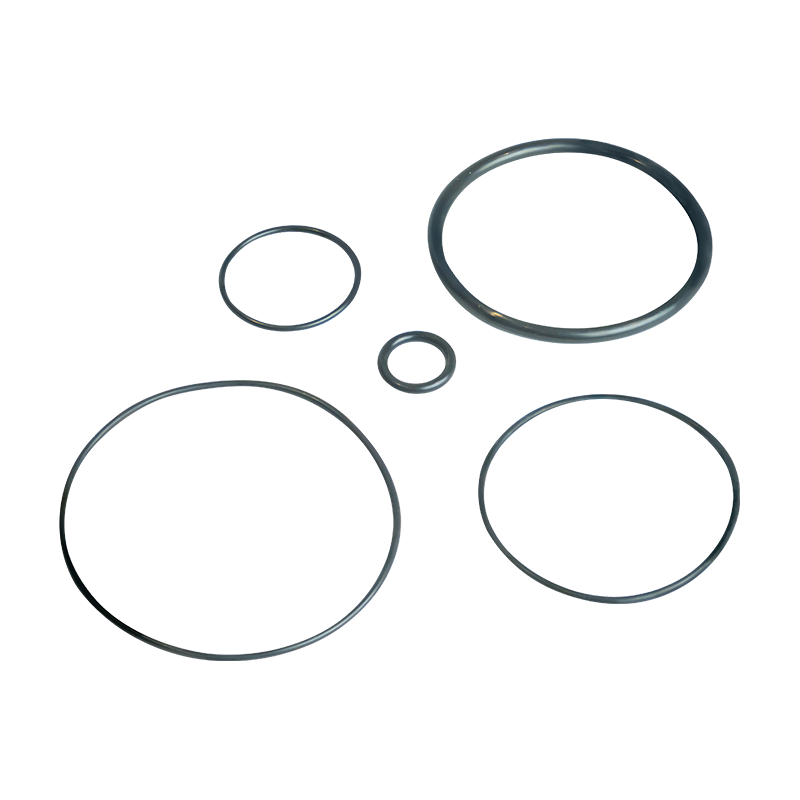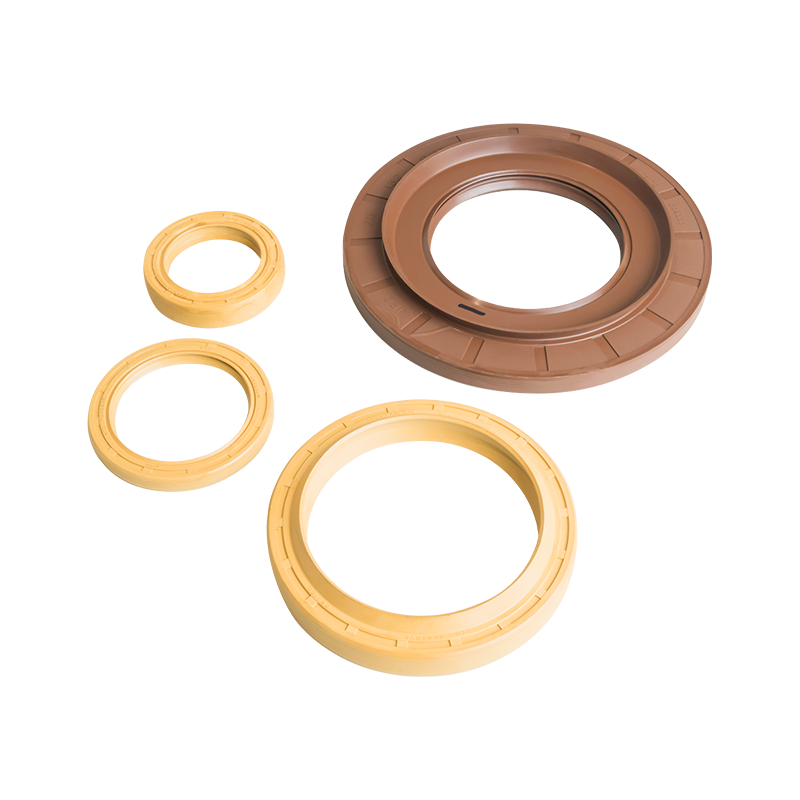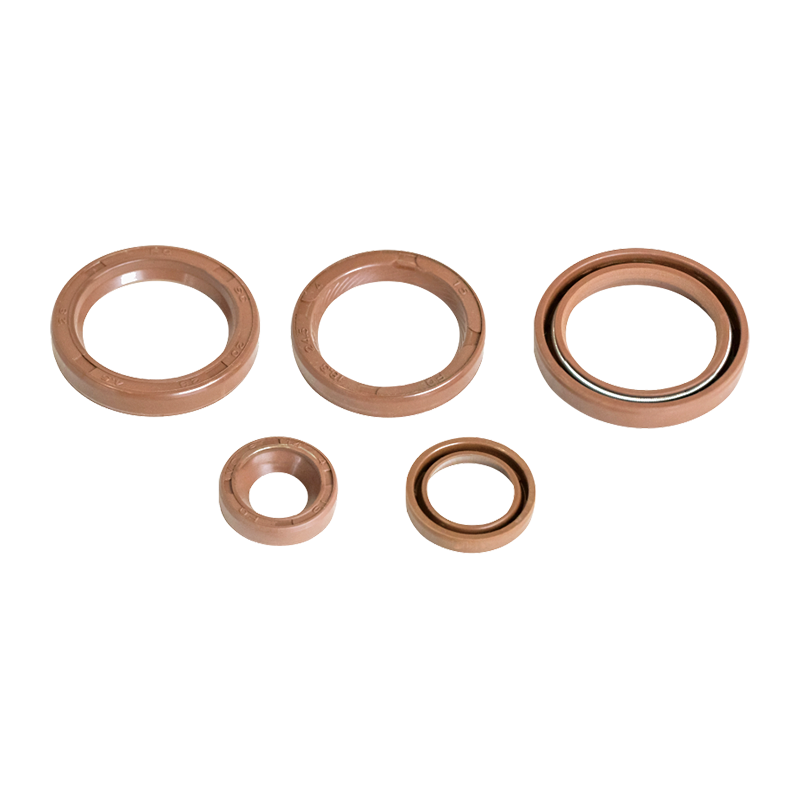How has FAWDE Engine Parts PTFE Oil Seal evolved over the years in terms of design and materials?
The evolution of FAWDE Engine Parts PTFE Oil Seal reflects the ongoing demand for higher efficiency, durability, and reliability in modern engines. Over the years, advancements in materials, design, and manufacturing processes have led to oil seals that not only provide superior sealing performance but also address the challenges of extreme operating conditions.
Early Developments of FAWDE Engine Parts PTFE Oil Seal
In its initial stages, FAWDE Engine Parts PTFE Oil Seal was developed primarily to replace conventional rubber seals in engines. Traditional rubber seals were prone to wear, heat degradation, and chemical corrosion, which often resulted in oil leakage and decreased engine efficiency. The introduction of PTFE-based sealing technology provided a significant improvement. PTFE, known for its high resistance to heat, chemicals, and friction, allowed the seals to perform under demanding conditions without rapid degradation.
The first iterations of FAWDE Engine Parts PTFE Oil Seal were relatively simple in design, typically featuring a single sealing lip and a basic metal reinforcement ring. Despite their simplicity, these early designs offered improved reliability over standard rubber seals, particularly in high-temperature engine environments.
Advancements in Materials
Material innovation has played a central role in the evolution of FAWDE Engine Parts PTFE Oil Seal. Initially, PTFE was used in a relatively unmodified form, which provided excellent chemical and thermal resistance but was limited in mechanical flexibility. Over time, engineers developed enhanced PTFE compounds that incorporated fillers and additives to improve wear resistance, elasticity, and dimensional stability.
Key material advancements include:
- Carbon-filled PTFE: Improved wear resistance and reduced friction for long-term engine operation.
- Glass-reinforced PTFE: Increased rigidity and dimensional stability under high-speed rotations.
- PTFE with anti-extrusion additives: Prevented seal deformation in high-pressure applications.
These material innovations enabled FAWDE Engine Parts PTFE Oil Seal to meet the growing demands of modern engines, which operate at higher temperatures, speeds, and pressures than earlier models.
Design Evolution for Enhanced Performance
Alongside material improvements, the design of FAWDE Engine Parts PTFE Oil Seal has undergone significant refinement. Early designs often struggled with sealing efficiency under dynamic conditions, such as fluctuating pressures or rapid shaft movements. Engineers addressed these challenges by introducing multi-lip designs, optimized lip geometries, and enhanced spring reinforcements.
Multi-lip Design
The addition of multiple sealing lips helped create secondary barriers against oil leakage. In modern FAWDE Engine Parts PTFE Oil Seal, the primary lip handles the main sealing function, while secondary lips provide additional protection against contamination and pressure variations. This design reduces the likelihood of leakage and improves overall seal longevity.
Optimized Lip Geometry
The geometry of the sealing lip directly affects the contact pressure and friction with the shaft. Through precision engineering, FAWDE Engine Parts PTFE Oil Seal now features lip profiles that maintain consistent contact, minimize wear, and reduce energy loss due to friction. These enhancements are particularly important for engines operating at high RPMs, where seal failure could lead to significant maintenance issues.
Reinforced Spring Structures
Modern designs often incorporate metal or polymer springs that maintain optimal lip tension. This ensures the seal retains its effectiveness even under thermal expansion or shaft misalignment. Reinforced spring structures in FAWDE Engine Parts PTFE Oil Seal prevent early wear and deformation, enhancing reliability in both stationary and high-speed engines.
Manufacturing Process Improvements
The evolution of FAWDE Engine Parts PTFE Oil Seal is also closely linked to advances in manufacturing technology. Traditional molding techniques were limited in precision, leading to minor inconsistencies in lip thickness and surface smoothness. Modern manufacturing methods, including precision machining, injection molding, and automated inspection systems, allow for highly consistent products with tighter tolerances.
These advancements result in FAWDE Engine Parts PTFE Oil Seal that deliver uniform performance, longer service life, and reduced risk of leakage across batches. Automated quality control ensures that each seal meets stringent specifications required by high-performance engines.
Resistance to Harsh Operating Conditions
One of the defining improvements in FAWDE Engine Parts PTFE Oil Seal is its ability to withstand harsh operating conditions. Earlier seals often failed under extreme heat, chemical exposure, or mechanical stress. Today, these oil seals are engineered to endure:
- High temperatures: Modern PTFE compounds can maintain their properties in prolonged exposure to elevated engine temperatures.
- Chemical resistance: Oils, fuels, and cleaning agents have minimal impact on PTFE-based seals, reducing degradation.
- Pressure fluctuations: Multi-lip and reinforced designs prevent extrusion or deformation during sudden pressure spikes.
These capabilities make FAWDE Engine Parts PTFE Oil Seal suitable for a broad range of engines, from heavy-duty diesel engines to high-speed gasoline engines.
Industry Applications and Buyer Considerations
FAWDE Engine Parts PTFE Oil Seal has become a standard choice for buyers who prioritize engine reliability and low maintenance. Industries that rely heavily on these seals include commercial transportation, construction machinery, agricultural equipment, and industrial engines.
When selecting FAWDE Engine Parts PTFE Oil Seal, buyers often consider:
- Compatibility with engine type and operating conditions.
- Durability under high temperatures and chemical exposure.
- Ease of installation, including lip geometry and spring design.
- Maintenance requirements, as PTFE seals often reduce the frequency of replacements.
Bolded terms such as engine reliability, high-temperature resistance, and chemical stability often appear in buyer searches related to FAWDE Engine Parts PTFE Oil Seal.
Comparative Advantages Over Earlier Seals
The evolutionary improvements of FAWDE Engine Parts PTFE Oil Seal provide several advantages over traditional and early PTFE seals:
| Feature | Early Seal | Modern FAWDE Engine Parts PTFE Oil Seal |
|---|---|---|
| Material | Basic PTFE | Reinforced, carbon-filled, or glass-filled PTFE |
| Lip Design | Single lip | Multi-lip with optimized geometry |
| Spring Support | Minimal | Reinforced for consistent pressure |
| Temperature Resistance | Moderate | High, sustained at engine operating limits |
| Chemical Resistance | Limited | High, resistant to oils and fuels |
| Durability | Shorter lifespan | Extended lifespan with minimal maintenance |
This table illustrates how FAWDE Engine Parts PTFE Oil Seal has evolved to provide superior sealing performance in modern engines.
Future Trends in FAWDE Engine Parts PTFE Oil Seal Design
Looking ahead, the evolution of FAWDE Engine Parts PTFE Oil Seal will likely focus on further material enhancements, design optimization, and environmental sustainability. Potential future developments include:
- Advanced PTFE composites with nanoparticles for even higher wear resistance.
- Adaptive lip designs capable of self-adjusting to minor shaft misalignments.
- Eco-friendly manufacturing processes that reduce carbon footprint without compromising performance.
As engine technology continues to advance, FAWDE Engine Parts PTFE Oil Seal will remain a critical component, ensuring long-term reliability and efficiency.
Conclusion
The evolution of FAWDE Engine Parts PTFE Oil Seal demonstrates a continuous commitment to improving engine performance through innovation in materials, design, and manufacturing. From its early applications replacing standard rubber seals to modern high-performance versions with multi-lip designs, reinforced springs, and advanced PTFE compounds, these oil seals have become an essential component in modern engines.
Buyers and engineers alike benefit from FAWDE Engine Parts PTFE Oil Seal due to its superior durability, chemical resistance, and adaptability to harsh operating conditions. As technology progresses, further innovations are expected, continuing the legacy of FAWDE Engine Parts PTFE Oil Seal as a reliable, high-performance solution for engine sealing needs.
Sray up to date with allour recent products
- Address: No. 6 Yangsha Road, Chengbei Industrial Park, Huilong Town, Qidong City, Jiangsu Province China
- Phone: +86-13906283641+86-18934546679
- Fax: +86-0513-83698022
- Email: [email protected]




 English
English русский
русский 中文简体
中文简体







